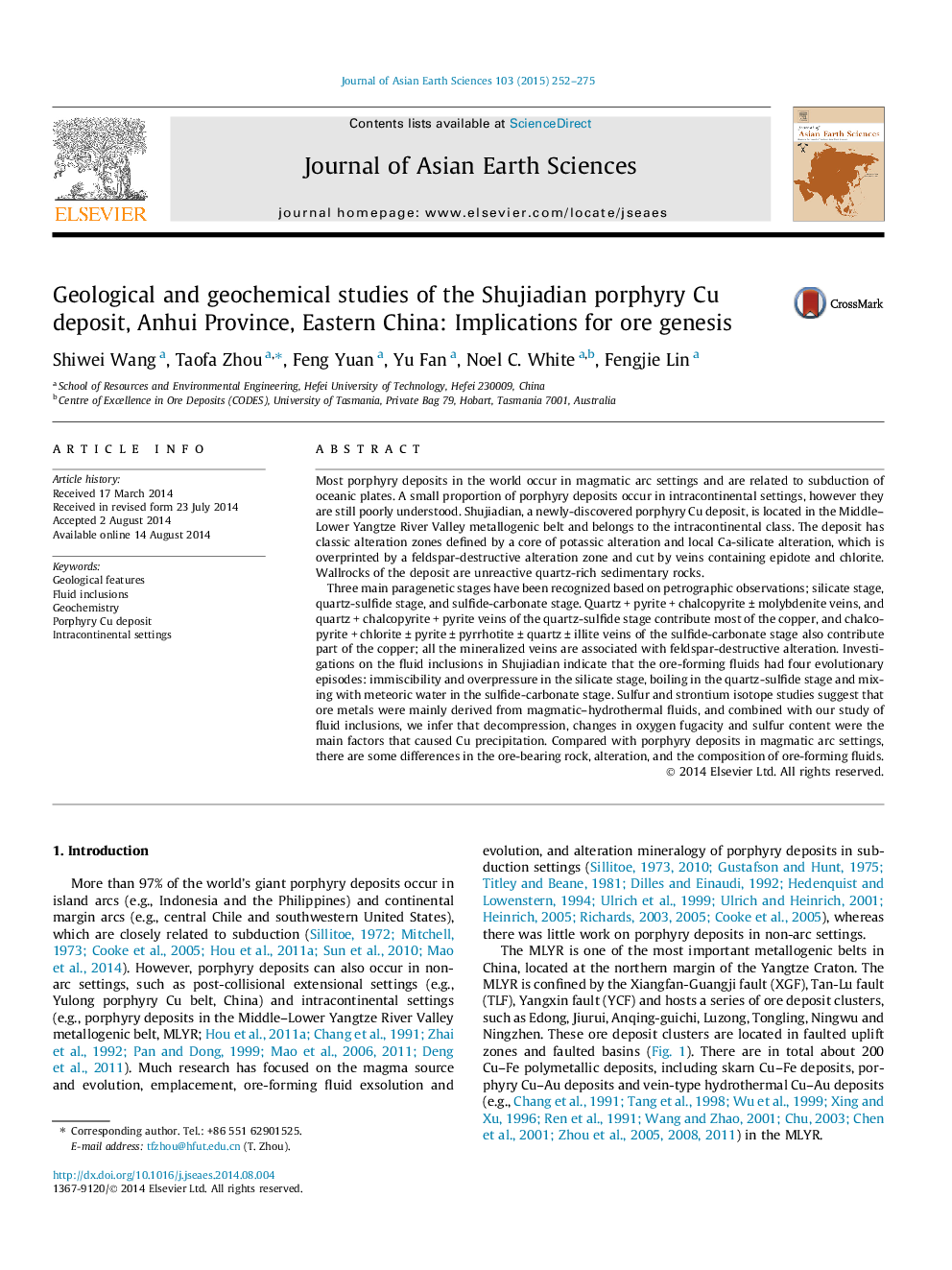| Article ID | Journal | Published Year | Pages | File Type |
|---|---|---|---|---|
| 4730361 | Journal of Asian Earth Sciences | 2015 | 24 Pages |
•Describes the geological characteristics of Shujiadian porphyry Cu deposit in detail.•Detailed fluid inclusion study makes it possible to interpret the hydrothermal evolution.•The evolution of hydrothermal fluid of Shujiadian porphyry Cu deposit has four episodes.•Discusses factors that led to the precipitation of Cu.
Most porphyry deposits in the world occur in magmatic arc settings and are related to subduction of oceanic plates. A small proportion of porphyry deposits occur in intracontinental settings, however they are still poorly understood. Shujiadian, a newly-discovered porphyry Cu deposit, is located in the Middle–Lower Yangtze River Valley metallogenic belt and belongs to the intracontinental class. The deposit has classic alteration zones defined by a core of potassic alteration and local Ca-silicate alteration, which is overprinted by a feldspar-destructive alteration zone and cut by veins containing epidote and chlorite. Wallrocks of the deposit are unreactive quartz-rich sedimentary rocks.Three main paragenetic stages have been recognized based on petrographic observations; silicate stage, quartz-sulfide stage, and sulfide-carbonate stage. Quartz + pyrite + chalcopyrite ± molybdenite veins, and quartz + chalcopyrite + pyrite veins of the quartz-sulfide stage contribute most of the copper, and chalcopyrite + chlorite ± pyrite ± pyrrhotite ± quartz ± illite veins of the sulfide-carbonate stage also contribute part of the copper; all the mineralized veins are associated with feldspar-destructive alteration. Investigations on the fluid inclusions in Shujiadian indicate that the ore-forming fluids had four evolutionary episodes: immiscibility and overpressure in the silicate stage, boiling in the quartz-sulfide stage and mixing with meteoric water in the sulfide-carbonate stage. Sulfur and strontium isotope studies suggest that ore metals were mainly derived from magmatic–hydrothermal fluids, and combined with our study of fluid inclusions, we infer that decompression, changes in oxygen fugacity and sulfur content were the main factors that caused Cu precipitation. Compared with porphyry deposits in magmatic arc settings, there are some differences in the ore-bearing rock, alteration, and the composition of ore-forming fluids.
Graphical abstractFigure optionsDownload full-size imageDownload as PowerPoint slide
